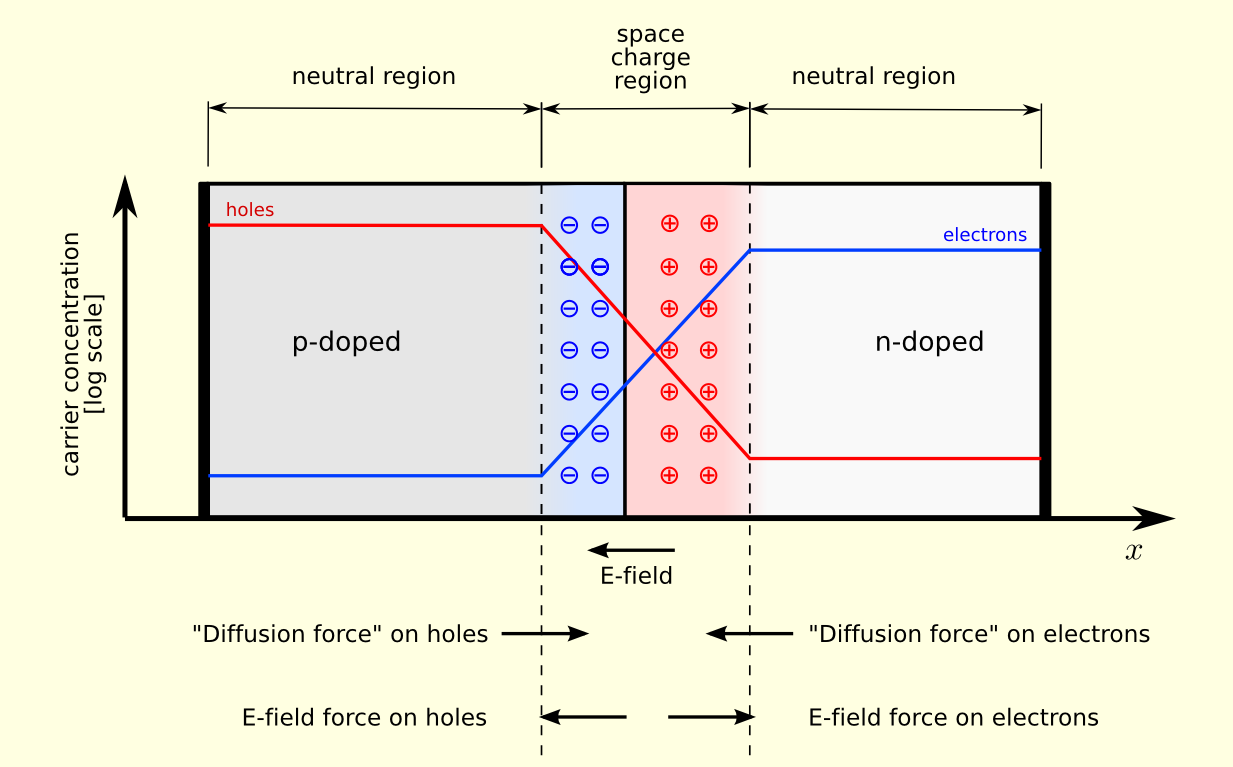
What happens to the potential barrier of the p- n junction diode when it is?
Answer
456.9k+ views
Hint: Diode is the type of the semiconductor material that is used as the switch to allow the current in one direction and restricting the current flowing in the opposite direction. Out of which the p- n junction diode (positive- negative) is most commonly used.
Complete step by step solution:
The p- n junction diode has two terminals which are formed as the p type semiconductor and the n type semiconductor joins. The p type semiconductor has the positive holes as the majority charge carriers and the n- type semiconductor has the majority electric electron as the charge carriers. This diode functions only when the diode is forward biased. But if the diode is reverse biased, the current does not flow through the circuit.

When the current passes, the negative terminal releases the electrons and these electrons move towards the positive terminal and thus it reduces the depletion region by reducing potential barrier. In a p- n junction diode, the potential barrier is $0.7\,V$ if silicon is used. After breaking the barrier, the conventional current flows through the circuit. Hence the electrons flow through the negative terminal and holes to the positive terminal.
Note: The material that makes up the p- n semiconductor is silicon, germanium and the gallium arsenide. Out of which the silicon semiconductor is most commonly used, this is because the silicon can withstand the higher temperature during the flow of the charged particles than the germanium semiconductor.
Complete step by step solution:
The p- n junction diode has two terminals which are formed as the p type semiconductor and the n type semiconductor joins. The p type semiconductor has the positive holes as the majority charge carriers and the n- type semiconductor has the majority electric electron as the charge carriers. This diode functions only when the diode is forward biased. But if the diode is reverse biased, the current does not flow through the circuit.

When the current passes, the negative terminal releases the electrons and these electrons move towards the positive terminal and thus it reduces the depletion region by reducing potential barrier. In a p- n junction diode, the potential barrier is $0.7\,V$ if silicon is used. After breaking the barrier, the conventional current flows through the circuit. Hence the electrons flow through the negative terminal and holes to the positive terminal.
Note: The material that makes up the p- n semiconductor is silicon, germanium and the gallium arsenide. Out of which the silicon semiconductor is most commonly used, this is because the silicon can withstand the higher temperature during the flow of the charged particles than the germanium semiconductor.
Recently Updated Pages
Master Class 12 Business Studies: Engaging Questions & Answers for Success

Master Class 12 English: Engaging Questions & Answers for Success

Master Class 12 Social Science: Engaging Questions & Answers for Success

Master Class 12 Chemistry: Engaging Questions & Answers for Success

Class 12 Question and Answer - Your Ultimate Solutions Guide

Master Class 12 Economics: Engaging Questions & Answers for Success

Trending doubts
Which are the Top 10 Largest Countries of the World?

Differentiate between homogeneous and heterogeneous class 12 chemistry CBSE

What are the major means of transport Explain each class 12 social science CBSE

Why is the cell called the structural and functional class 12 biology CBSE

What is the Full Form of PVC, PET, HDPE, LDPE, PP and PS ?

What is a transformer Explain the principle construction class 12 physics CBSE




